
It was finally time to get my first fellow Norwegian birding guests. Tormod Thorsen and Ketil Knudsen were arriving on the late KLM flight. Both experienced birders and Ketil also a very well known wildlife photographer with many awards in Norway and also a big contributor to pictures in many books. I was quite exited driving to the airport to pick them up. Ketil had booked visa online so came through immigration early whilst Tormod had to line up. Finally, they were both through and we drove back to Kiligolf On the way, we picked up several Slender-tailed Nightjars. It was now quite late when we arrived, so the smartest thing was to turn in after a quick beer on my balcony.
Day 1, Friday November 15 – Kiligolf
We had decided to just bird Kiligolf this day. The boys had a long flight in their legs. We woke up and relaxed on my balcony with a cup of coffee while watching the birds in my garden: Vitelline Masked and Chestnut Weaver, Superb Starling, Pale White-eye, Tropical Boubou and Magpie Shrike were recorded before we went on a walk. My local young guide Abdul was with us. On the walk, we added amongst other the following birds: Red-faced Crombec, Chinspot Batis, Purple Grenadier, Crimson-rumped Waxbill, Diederik and Red-chested Cuckoo, White-winged Widowbird, Orange-breasted Bushshrike, White-bellied Go-away-bird, African Grey Flycatcher, Reichenow´s Seed-eater, Yellow-fronted Canary, Grey-headed Kingfisher, Buff-bellied Warbler, Red-cheeked Cordonbleu, White-browed Scrub Robin, Yellow Bishop, Lizard Buzzard, Golden-backed Weaver, Spotted Palm Thrush, Sombre Greenbul, Blue-naped Mousebird, Marabou Stork, Pallid Honeyguide, Malachite Kingfisher, Thick-billed Weaver, Slate-coloured Boubou, African Paradise Flycatcher, Yellow-breasted Apalis, Tambourine Dove and Green-winged Pyttilia. A total of more than 50 species before we walked back to my house where Selvine prepared a nice breakfast for us. It was very hot during mid day, so we were only out walking again at around 15:30. We choose to drive to the clubhouse and do another loop in the afternoon. Southern Red Bishop, Black-faced Waxbill, Giant Kingfisher, Nubian Woodpecker, Brubru, Spectacled Weaver, Red-faced Cisticola, Wire-tailed Swallow, Klaas´s Cuckoo, Red-rumped Swallow, Scarlet-chested Sunbird, Black-bellied Bustard, Northern Grey-headed Sparrow, European Bee-eater and Gabar Goshawk were some of the birds we added to our list that ended at 87 species for the day. We returned to my house where Selvine cooked a nice supper for us. After dinner, we went through and compared our lists before we retired early to bed.
Some pictures from Day 1:

White-winged Widowbird, Euplectes albonatus

White-bellied Go-away-bird, Corythaixoides leucogaster – Endemic to NE Africa
Day 2, Saturday. November 16 – Kiligolf – Arusha NP – Kiligolf
We had decided to visit Arusha National Park this day. Ketil had been there before, but still missed some birds. We were at the gate around opening times. We started picking up birds quite fast: Augur Buzzard, Taveta Weaver, Trilling and Singing Cisticola, Scaly Francolin, Bronzy Sunbird, Baglafecht Weaver, Little Greenbul, Northern Fiscal, Golden-tailed Woodpecker, Red-collared Widowbird, Short-winged Cisticola, Moustached Grass Warbler and Yellow-throated Longclaw were some of the birds we saw before we reached the lakes. Around the lakes, we found the usual suspects including Lesser and Greater Flamingo, Winding Cisticola, Cape Teal, Southern Pochard, Southern Citril, Willow Warbler, Pied Avocet, Long-billed Pipit, Spur-winged lapwing ++. We had lunch at the picnic site and continued towards Mount Meru. We picked up Red-billed Oxpeckers on some Buffaloes. Up the slopes of Mount Meru, we added Yellow-bellied Waxbill, White-eyed Slaty Flycatcher, Hartlaub´s Turaco, Rüppel´s Robin-Chat and White-starred Robin before we stopped at the Fig Tree. At the fig tree, we found an Abbott´s Starling (a new TZ bird for me). Other good birds in the area included Crowned Hornbill, White-eared Barbet and Evergreen Forest Warbler. Uphill, we stopped for Cinnamon-chested Bee-eater. At the top Brown Woodland Warbler, Montane White-eye, Stripe-faced Greenbul and Crowned Eagle (a bird Ketil had been looking for a long time). We stopped at the Fig tree on the way down and had a Thick-billed Seedeater and a little further down a Black-throated Wattle-eye. I usually do the crater in the morning, but due to bad weather we had dropped it this time. We started heading for the crater now and in deep forest Abdul spotted a Bar-tailed Trogon that lifted the spirit in the car. Around the museum and on the crater rim, we added amongst others, the following species: Silvery-cheeked Hornbill, Bar-throated and Black-headed Apalis, Kenrick´s and Sharpe´s Starling, African Emerald Cuckoo, Cinnamon Bracken Warbler and Grey-headed Nigrita. It was now getting late and we drove towards the gate and exited the park. At home, Selvine prepared us a nice meal.
Some pictures from day 2:

Scaly Francolin, Pternistis squamatus

Short-winged Cisticola, Cisticola brachypterus

Greater Flamingo, Phoenicopterus roseus

Willow Warbler, Phylloscopus trochilus
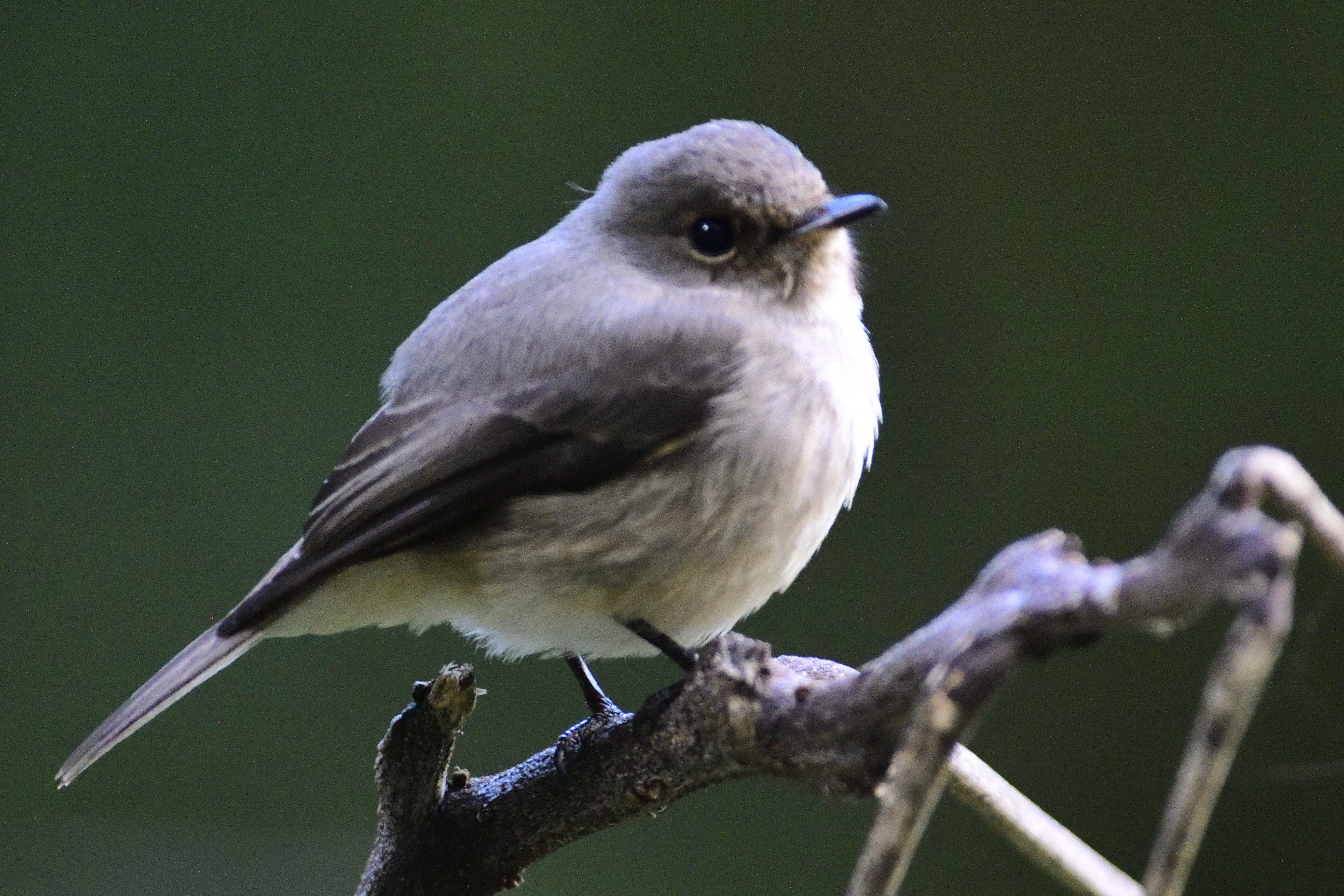
African Dusky Flycatcher, Muscicapa adusta
Day 3, Sunday, November 17 – Kiligolf – Lark Plains- Oldonyo Sambu – Lake Duluti – Kiligolf
We arrived at the Lark Plains around 08:00 and started picking up the birds: Red-capped Lark, Short-tailed Lark, Pallid Harrier, Isabelline Wheatear and Kori Bustard were seen before we parked the car. Around the parking we had Chestnut-bellied Sandgrouse, Fischer´s Starling (never seen this at Lark Plains before), Fischer´s Sparrow-Lark, Foxy Lark and Beautiful Sunbird. We usually find the Beesley´s Lark quickly, but this day we were struggling. Abdul first found a Athi Short-toed Lark before we finally found the endemic Beesley´s Lark and surprisingly a Common Ostrich. We returned to the car and started to drive slowly towards the Masai booma. On the way, we found: White-bellied Canary, Hildebrandt´s Starling, Red-fronted Prinia (Warbler), Taita Fiscal, Northern Wheatear, Temminck´s Courser, Red-rumped Swallow and Isabelline Shrike. We parked the car and took a walk around the acacia dry forest: Banded Parisoma, Southern Grosbeak Canary, Blue-naped Mousebird, Greater Kestrel, Grey-capped Social Weaver, Kenya Sparrow, White-headed Buffalo Weaver, Grey Wren-Warbler, Chestnut Sparrow, Speckle-fronted Weaver, Northern Crombec, Red-throated Tit, Northern White-crowned Shrike and Northern Red-billed Hornbill were all seen before we ended back at the car. Under the shade of an Acacia tree, we had lunch prepared by Selvine. It was now 11:00 and quite hot, so we took our time. After lunch, we continued to our next destination, Oldonyo Sambu. This is the best spot for Schalow´s (Abyssinian) Wheatear. We also added White-fronted Bee-eater, Streaky Seedeater, Red-fronted Barbet, Lesser Honeyguide, Abyssinian Scimitarbill and Speckled Pigeon to our list. We got back in the car just when a very heavy rain started. Good timing. Our next destination Lake Duluti delivered our target bird, Taveta Weaver + Black Crake and the normal water bird suspects. On the way to Kiligolf, we stopped at the bridge to Dolly estate. Abdul has a place there for Brown-breasted Barbet and Grey-Olive Greenbul. We got both of them and a bonus bird in the form of a Common Nightingale. We returned early to Kiligolf, since the day after, the Safari would start and we needed time to pack our car. We said goodbye to Abdul and once home, I packed the car ready for the day after. Selvine as usual made us a great dinner and we all retired early to bed.
Some pictures from Day 3:
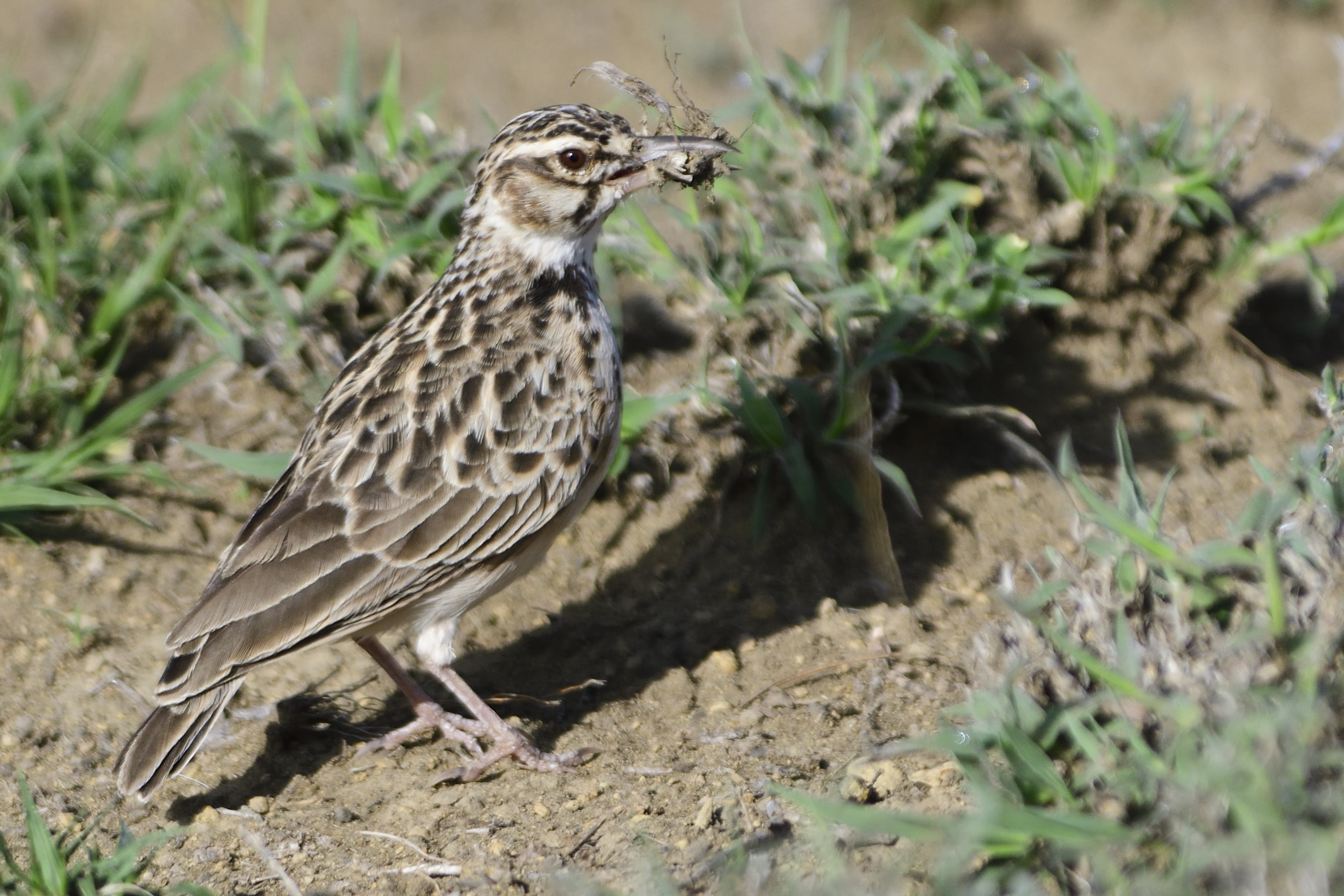
Short-tailed Lark, Spizocory fremantlii – Endemic to NE Africa

Athi Short-toed Lark, Alaudala athensis – Endemic to S Kenya and N Tanzania

Beesley´s Lark, Chersomanes beesleyi – Endemic to Lark Plains, Engikaret, Tanzania

Schalow´s Wheatear, Oenanthi schalowi – Endemic to East Africa

Abyssinian Scimitarbill, Rhinopomastus minor – Endemic to NE Africa
Day 4, Monday, November 18 – Kiligolf – Nyumba Ya Mungu Dam – Same – South Pare Mountains -Same
Let the Safari begin. We left Kiligolf early and headed for a spot Martin Joho and I have just short of Nyumba ya Mungu Dam. The ride went smooth and we picked up Martin at the junction to the dam. We soon reached the spot and parked the car: Hunter´s Sunbird, Southern Grosbeak Canary, Tsavo Sunbird, Sombre Greenbul, Pink-breasted Lark, Black-necked Weaver, White-bellied Canary, Straw-tailed Whydah, Parrot-billed Sparrow, Blue-capped Cordonbleu, Somali Bunting, Red-fronted Prinia (Warbler), Pygmy Batis, Scaly Chatterer and Yellow-spotted Bush Sparrow (Petronia) were all found in less than an hour birding. We got back to the car and headed for our home for the night, Elephant Motel in Same. We checked in, had lunch and around 15:00 we got back in the car and drove up the South Pare Mountains. The road is pretty bad, but we managed fine and parked at our normal spot around 16:15. We now had a little more than an hour to find our target bird, South Pare White-eye. Usambara Double-collared Sunbird, Yellow-throated Woodland Warbler, White-tailed Crested Flycatcher, Black-fronted Bushshrike were seen beforee we hooked up with South Pare White-eye. We could lower our shoulders and with still time to spare, we continued birding: Yellow-bellied Waxbill, Singing Cisticola, East Coast Boubou, African (Dark-capped) Yellow Warbler, Stripe-faced Greenbul and White-necked Raven was some of the birds seen before I made a hard stop at 17:30 in order to reach back to the Motel before dark. It was getting dark when we got back to the Motel. We freshened up and had dinner. Tormod went to bed early while Ketil and I were busy with our pictures. On the way to my room, I noticed a small bird that might have flown in to a window. It was a Common Buttonquail sitting quite still. We got Tormod out of bed so he could also see it. After that, we had a good night sleep. No pictures to show for on day 4.
Day 5, Tuesday, November 19 – Same to a place near Mkomazi NO – Magamba Forest West Usambara.
We left early to a spot close to the gate of Mkomazi NP. Selvine stayed behind in the Motel. We were at the bird spot around 07:15 and got right away into birds: Wattled Starling, Red-fronted Tinkerbird, Zanzibar Red Bishop, Red-bellied Parrot, Blue-cheeked Bee-eater, Southern Black Flycatcher, D´Arnaud´s and Red-and-yellow Barbet, Reichenow´s Seed-eater, Eastern Black-headed Batis, Von der Decken´s Hornbill, Black-headed Oriole, Black-throated Barbet, White-crested Helmetshrike, Eastern Violet-backed Sunbird, Tiny Cisticola, Common Rock Thrush, Orange-breasted Bushshrike Fischer´s Starling and Slate-coloured Boubou were some of the birds recorded in a couple of hours birding. We returned to the Motel, had breakfast and were soon on the way to Magamba Forest. It is about 120 km from Same to Mombo on good roads before the road climbs up to Lushoto and further up to Magamba Forest. We stopped in Soni to stock up on necessities before we continued. We made good time and were at the gate to Magamba before 14:30. The manager Getrude were there to great us and after the formalities were sorted we drove up to our normal camp by the old saw mill. We set up camp quickly and were soon out birding: African Black Duck, Waller´s Starling, Moustached Tinkerbird, Cinnamon Bracken Warbler, Cape Robin-Chat, Eastern Bronxe-naped Pigeon, Silvery-cheeked Hornbill, Mountain Buzzard, Harlaub´s Turaco, African Stonechat, Yellow-throated Woodland Warbler, Red-capped Forest Warbler, Streaky Seed-eater, Usambara Thrush, African Olive Pigeon, White-starred Robin, Barred Long-tailed Cuckoo and Usambara Double-collared Sunbird were some of the birds recorded that afternoon. We returned to camp and Selvine showed us what a fantastic bush cook she is. Martin, the camp master organised a nice bonfire and life was good. We retired early to bed.
Some pictures from day 5:

Zanzibar Red Bishop, Euplectes nigroventris

White-crested Helmetshrike, Prionops plumatus

Tiny Cisticola, Cisticola nanus – Endemic to NE Africa
Day 6, Wednesday, November 20 – Magamba Forest, West Usambara
A full day in paradise! We had coffee in the morning and waited for the light. We were out around 07:00, first bird: Oriole Finch followed by Olive Sunbird, Sharpe´s Starling Spot-throat, Dark-capped Mountain Greenbul, Shelley´s Greenbul, Southern Yellow White-eye, Olive Woodpecker, Grey Cuckooshrike, Usambara Akalat, African Hill Babbler, Grey Wagtail, Green-backed Honeybird and a soaring Crowned Eagle were found before breakfast. Selvine prepared a nice breakfast and we rested during the heat of the day. In the afternoon, we walked out again: Yellow-bellied Waxbill, Tambourine Dove, Dark-backed Weaver, Black-headed Apalis, Mottled Spinetail, Green Barbet, White-chested Alethe and Kenrick´s Starling + many of the birds seen the day before were recorded. We returned to camp and Selvine again cooked us a lovely meal. Our plan were to stay 3 nights in Magamba Forest, but we had done extremely well, so that night we decided to continue to Amani Forest after morning birding the day after.
Some pictures from day 6:

Black-headed Apalis, Apalis melanocephala
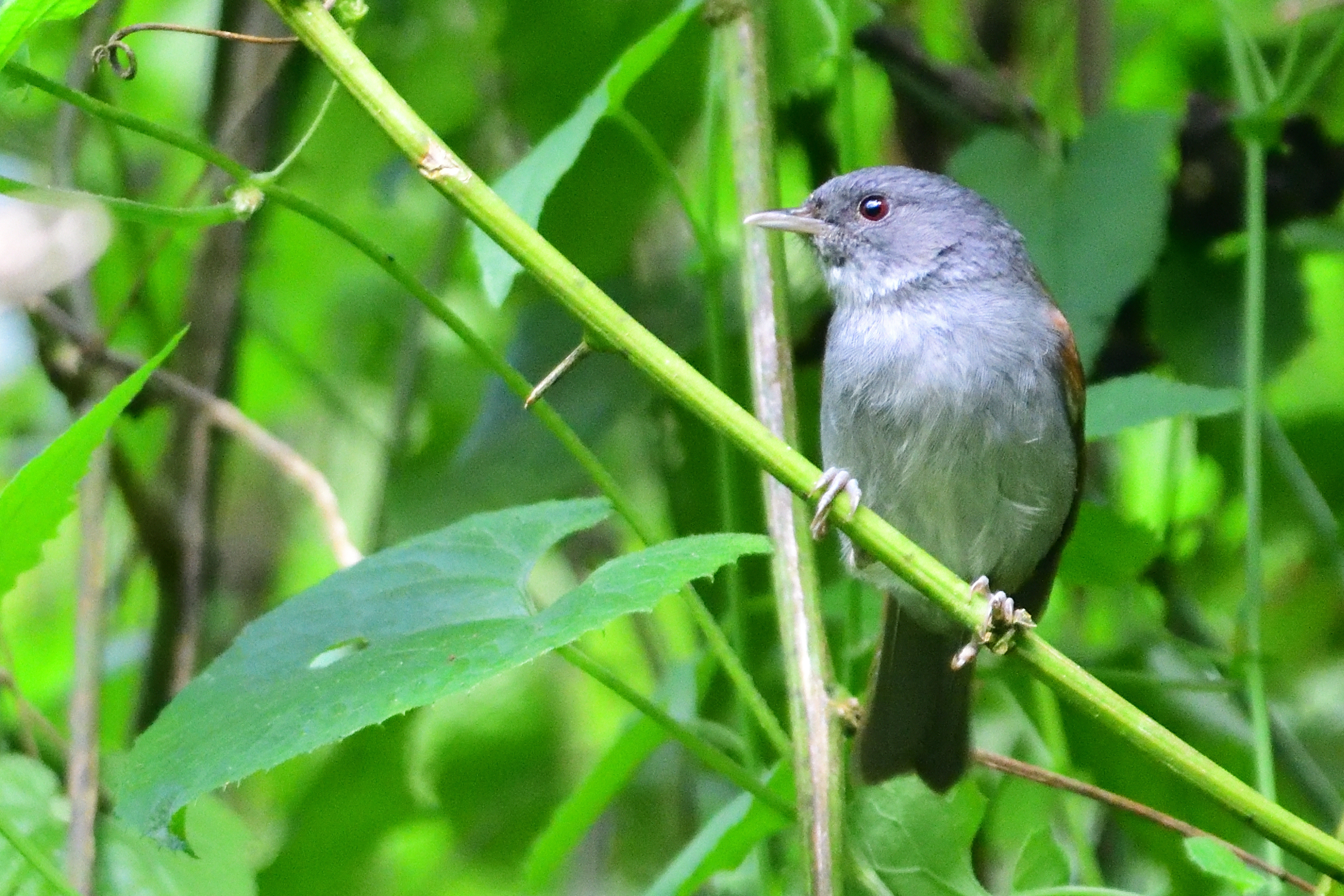
African Hill Babbler, Pseudoalcippe abyssinica

Cape Robin-Chat, Cossypha caffra

Usambara Thrush, Turdus roehli – Endemic to Usambara and Pare Mountains in Tanzania

Moustached Tinkerbird, Pogoniulus leucomystax

Hartlaub´s Turaco, Turaco hartlaubi – Endemic to East Africa

Red-capped Forest Warbler, Artisomis metopias – Endemic to Eastern Arc Mountains of Tanzania and N Mozambique
Day 7, Thursday, November 21 – Magamba Forest West Usambara to Amani Forest, East Usambara
I was woken the next morning by a Nightjar calling. There has been some lumping so what used to be the Usambara nightjar is now the Rwenzori Nightjar. I had coffee with the boys and we went out birding. We managed to add the following species Placid Greenbul, Bar-tailed Trogon, Forest Batis, Eurasian Blackcap, Montane Tiny Greenbul and Red-faced Crimsonwing. We returned to camp, had breakfast, packed and were soon on our way. It is quite a long drive to Muheza where we stopped and bought new provisions. Just north of Muheza, we stopped at our regular spot for Coastal Cisticola and Green Tinkerbird, but could not entice any of them. We managed to get Eastern Golden Weaver, Striped Kingfisher, Black Sparrowhawk and Red-faced Cisticola. We were running a little late and drove straight to camp. It was raining quite heavily, so no birding this afternoon.
Some pictures from Day 7:

Sharpes Starling, Pholia sharpii – Endemic to NE Africa

Forest Batis, Batis Mixta – Endemic to coastal East Africa
Day 8, Friday, November 22 – Amani Forest, East Usambara
The targets this day were Kretchmer´s Longbill, Long-billed Forest Warbler and Sharpe´s Akalat. Martin have his spots and we got in the car quite early. It is about a 45 minutes drive to one of the spots. Our first 2 birds were the first two targets, in addition we saw Trumpeter Hornbill, Square-tailed Drongo, Black-fronted Bushshrike, Southern Citril, Green-headed Oriole, Silvery-cheeked Hornbill and Yellow-streaked Greenbul. Having bagged the 2 primary targets, we moved on to the next spot. We searched for the Akalat for a long time and in the end managed to find one. Ketil got some good pictures. While searching for it, we also heard, but did not see an African Broadbill. Having the Akalat in box, we rreturned to camp for lunch and some relaxing. At 15:00 we were out birding again. We have a loop we do from camp and on the loop we saw amongst others the following birds: White-chested Alethe, Moustached Tinkerbird, Little and Shelley´s Greenbul, Green Barbet, Stripe-faced Greenbul, Uluguru Violet-backed Sunbird, Banded Green Sunbird, White-browed Coucal, Pale Batis, Long-crested Eagle and Red-capped Robin-Chat. The weather was very unstable so we had to seek shelter for the rain many times. We returned to camp, freshened up and had dinner. During night we heard the call of an African Wood Owl, but no Usambara Eagle-Owl. No pictures from Day 8
Day 9, Saturday, November 23 – Amani Forest, East Usambara.
Another full day in the Amani Forest. Unfortunately it rained in the morning, so we hung around camp until the rain stopped around 10:00. We went out and found Little Sparrowhawk, Red-backed Shrike, Purple-banded Sunbird, Black-bellied Starling, White-browed Robin-Chat, Red-tailed Ant-Thrush, Palm-nut Vulture, Amani Sunbird, Black-throated Wattle-eye, Brown-hooded Kingfisher and heard a Fisher´s Turaco. It had been a very slow morning. We still missed the Cabanis´s Bunting. We have another spot for that towards Emau Hills Lodge, so we set out with the Land Rover in the afternoon. We searched and searched all the way up to the dam before the lodge, but nothing. On the way down, we stopped at several places and finally we had some luck and found a Cabanis´s Bunting. At the same spot we had at least 2 Fischer´s Turaco that entertained us. The light was fading very fast, but we still managed some record shots. It was dark when we reached camp. We had dinner and settled early to bed.
A picture from Day 9

Fisher´s Turaco, Tauraco fischeri – Endemic to Coastal East Africa
Day 10, Sunday, November 24 – Amani Forest, East Usambara to Same
We packed camp in the morning and headed downhill to the lower forests of Amani. Southern Banded Snake Eagle, Wahlberg´s Eagle, Little Yellow Flycatcher, Chestnut-fronted Helmetshrike, Eastern Nicator, Lowland Tiny Greenbul and Plain-backed Sunbird were picked up. We had breakfast in Muheza and dropped Martin there, then started our long drive back to Same. It was raining when we got there, we still went out to the place near Mkomazi, but only managed to pick up an Eastern Violet-backed Sunbird female and Grey Wren-Warbler before the rain sent us back to the Motel again. No pictures to show for that day.
Day 11, Monday, November 25 – Same to Taita Hills, Kenya
Ketil decided to stay home this morning, so Tormod and I went to the place next to Mkomazi: Black Cuckooshrike, Red-backed Shrike, Fischer´s Starling, Green-winged Pyttilia, D´Arnauds´s and Red-and-yellow Barbet and Red-bellied Parrot were the best birds we saw. We went back to the Motel for breakfast and started our journey toward Taita Hills. The border crossing went fine and we arived in camp in Taita Hills around 15:00. We met up with Maina, the guide, and managed to get 2 of the 3 endemics, Taita White-eye and Taita Apalis that afternoon + Striped Pipit. The weather were still unstable. We had an early night.
Some pictures from Day 11:

Red-and-yellow Barbet, Trachyphonus erythrocephalus – Endemic to NE Africa
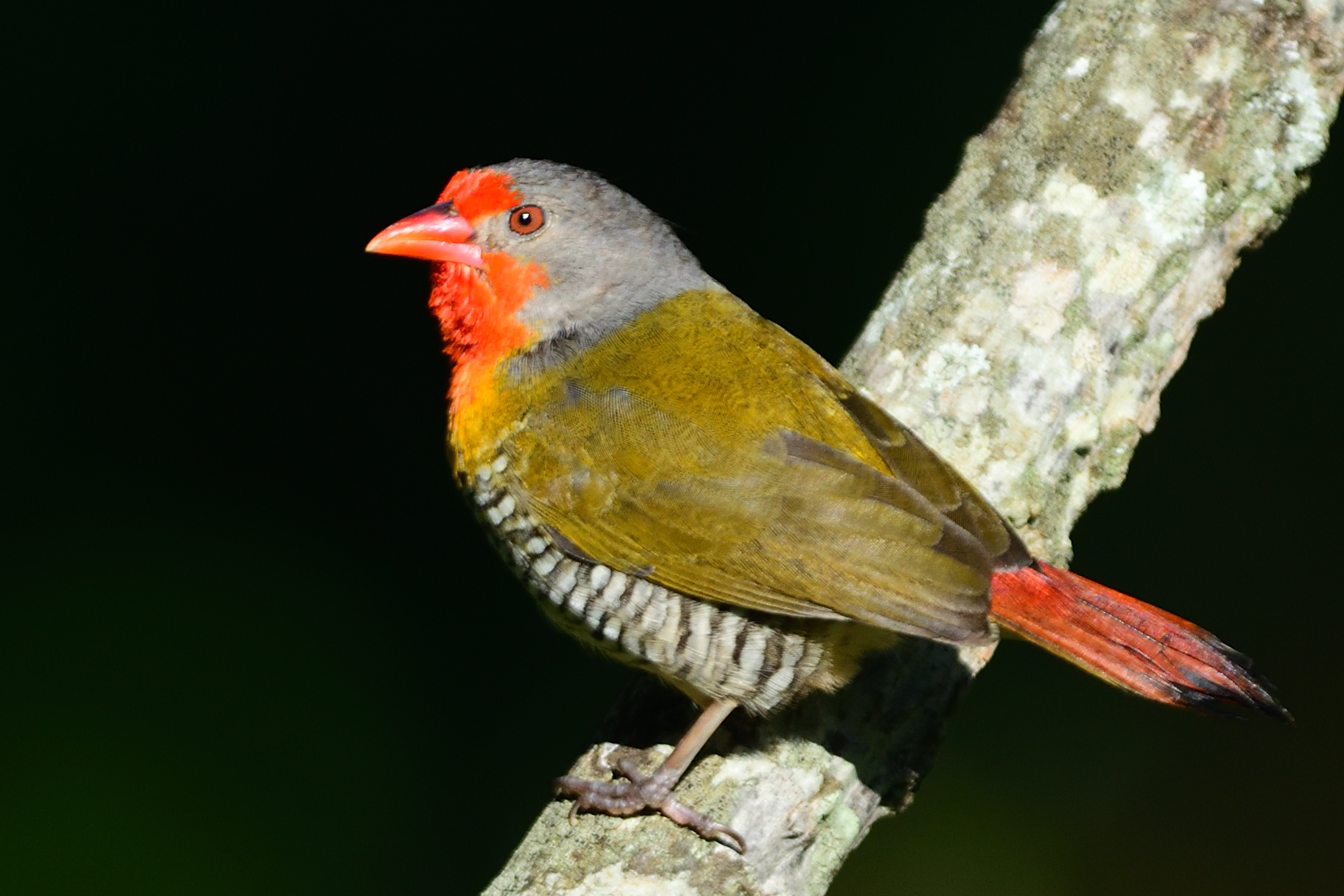
Green-winged Pytilia, Pytilia melba

Red- bellied (Orange-bellied) Parrot, Poicephalus rufiventris – Endemic to NE Africa
Day 12, Tuesday, November 26 – Taita Hills, Kenya to Kiligolf, Tanzania
With only one of the endemic birds missing, we put all over efforts into finding the Taita Thrush. Still to no avail. I know why and will change tactic next time. We left Taita Hills and started our journey back towards Tanzania. Everything went smooth at the border crossing and we arrived at Kiligolf in the late afternoon. We freshened up and Selvine prepared a nice meal for us. We retired again early to bed. No Pictures from Day 12.
Day 13, Werdnesday, November 27 – Kiligolf – Tarangire National Park – Kiligolf
We left early for Tarangire that morning. We were at the gate at 08:00. I did the formalities while the boys took a walk around. Once inside the park, we started ticking of birds: Rufous-tailed Weaver, African Grey Woodpecker, Yellow-collared Lovebird, Hamerkop, Ashy Starling, Swahili Sparrow, Red-billed and White-headed Buffalo Weaver, Northern Red-billed Hornbill, Tawny Eagle, Blue-cheeked Bee-eater, Arrow-marked Babbler, Yellow-billed Stork, Greater Honeyguide, Knob-billed Duck, Spur-winged Goose, Red-necked and Yellow-necked Spurfowl, Collared Pratincole, Three-banded Plover, Little Stint, Green Sandpiper, Common Greenshank, Woodland Kingfisher, Bare-faced Go-away-bird, Black-necked Weaver, Marsh Sandpiper, Bateleur, Rüppel´s Vulture and Common Ostrich before lunch. We had a nice lunch prepared by Selvine at out usual picnic spot. After lunch, we added amongst others the following species: Lappet-faced Vulture, Fischer´s Sparrowlark, Grey-crowned Crane, White-bellied Bustard, Secretarybird, Coqui Francolin, Southern Ground Hornbill, Nubian Woodpecker and Cut-throat Finch. We left the park around 16:15 and were back at Kiligolf just before dark. Selvine as usual, prepared a nice meal for us.
Some pictures from Day 13:
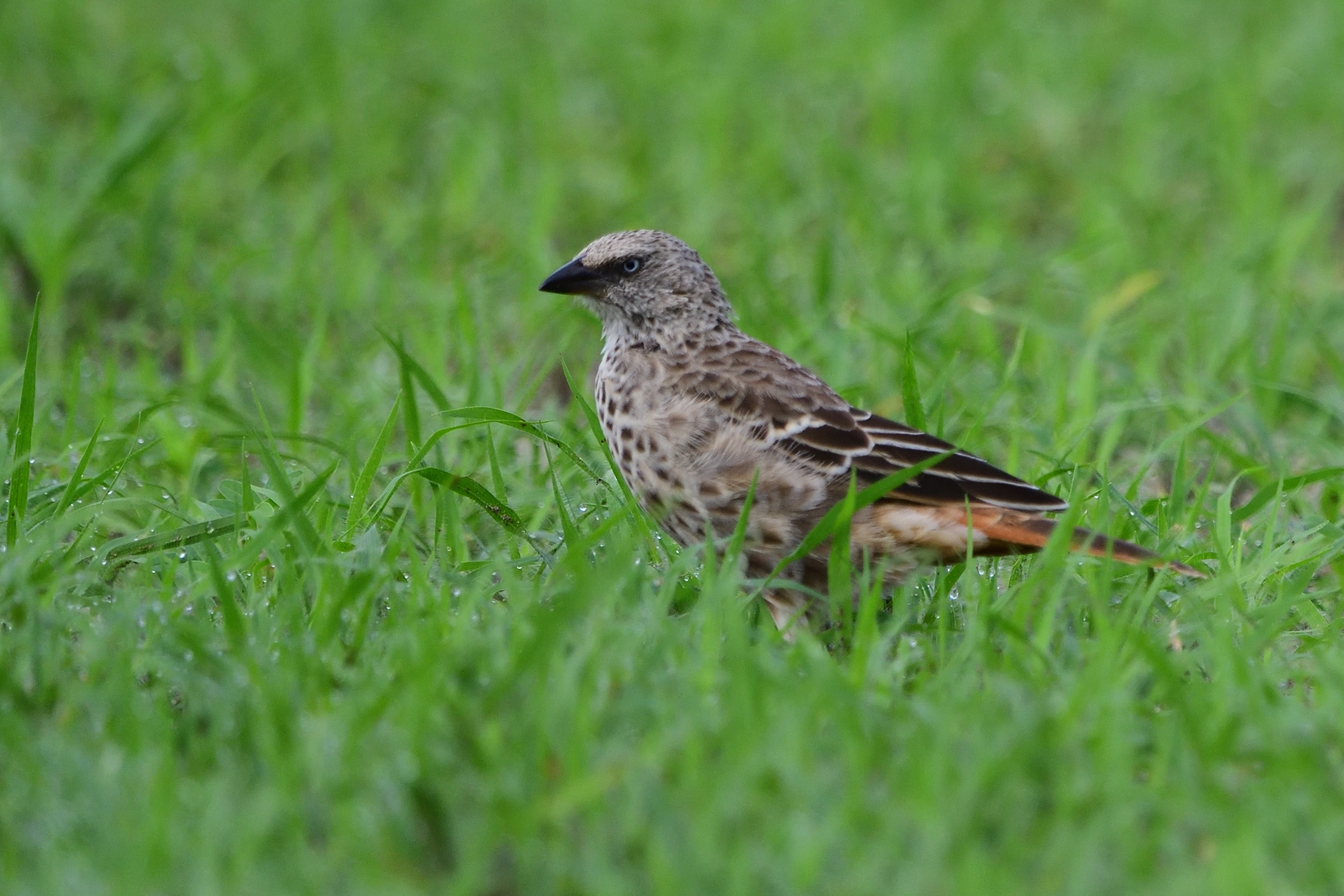
Rufous-tailed Weaver, Histurgops ruficauda – Endemic to Tanzania

Red-billed Buffalo Weaver, Bubalornis niger

Red-necked Spurfowl, Pternistis afer

Marsh Sandpiper, Tringa stagnatilis

Rüppel´s Vulture, Gyps rueppelli

Yellow-collared Lovebird, Agapornis personatus – Endemic to East Africa

Tawny Eagle, Aquila rapax

Lappet-faced Vulture, Torgos tracheliotos
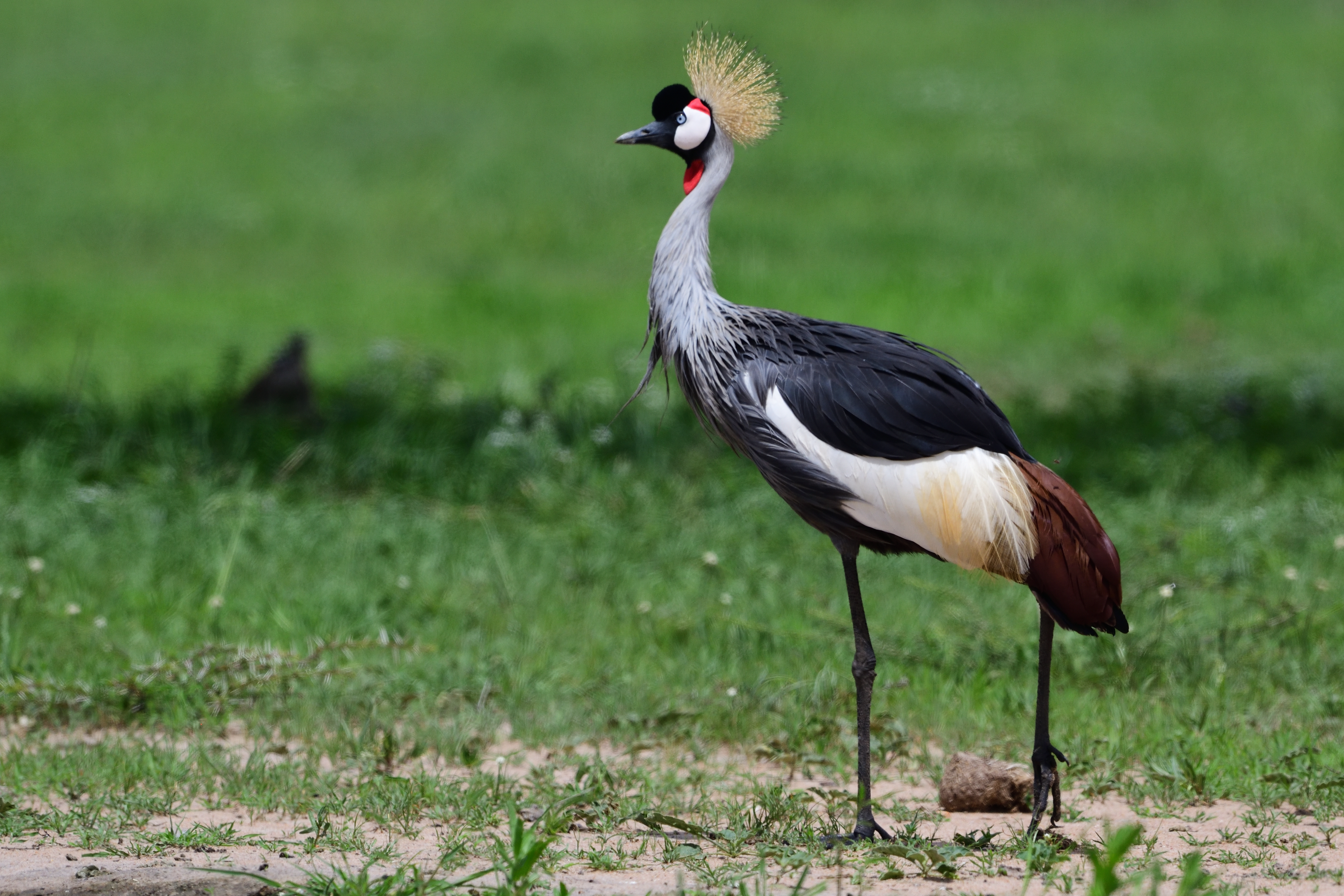
Grey Crowned Crane, Balearica regulorum

Fischer´s Sparrowlark, Eremopterix leucopareia – Endemic to SE Africa

White-bellied Bustard, Eupodotis senegalensis

Southern Ground-Hornbill, Bucorvus leadbeateri
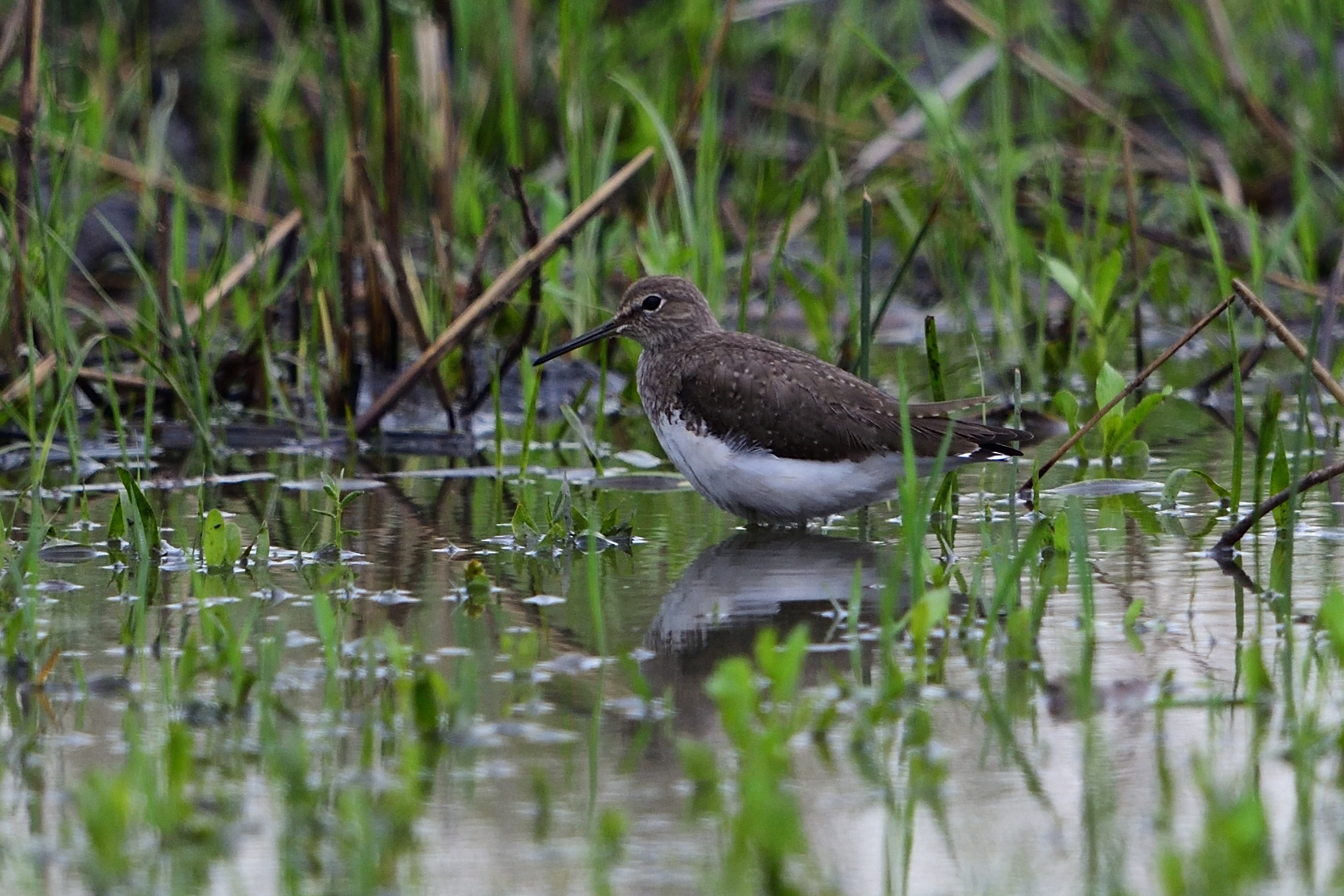
Green Sandpiper, Tringa ochropus
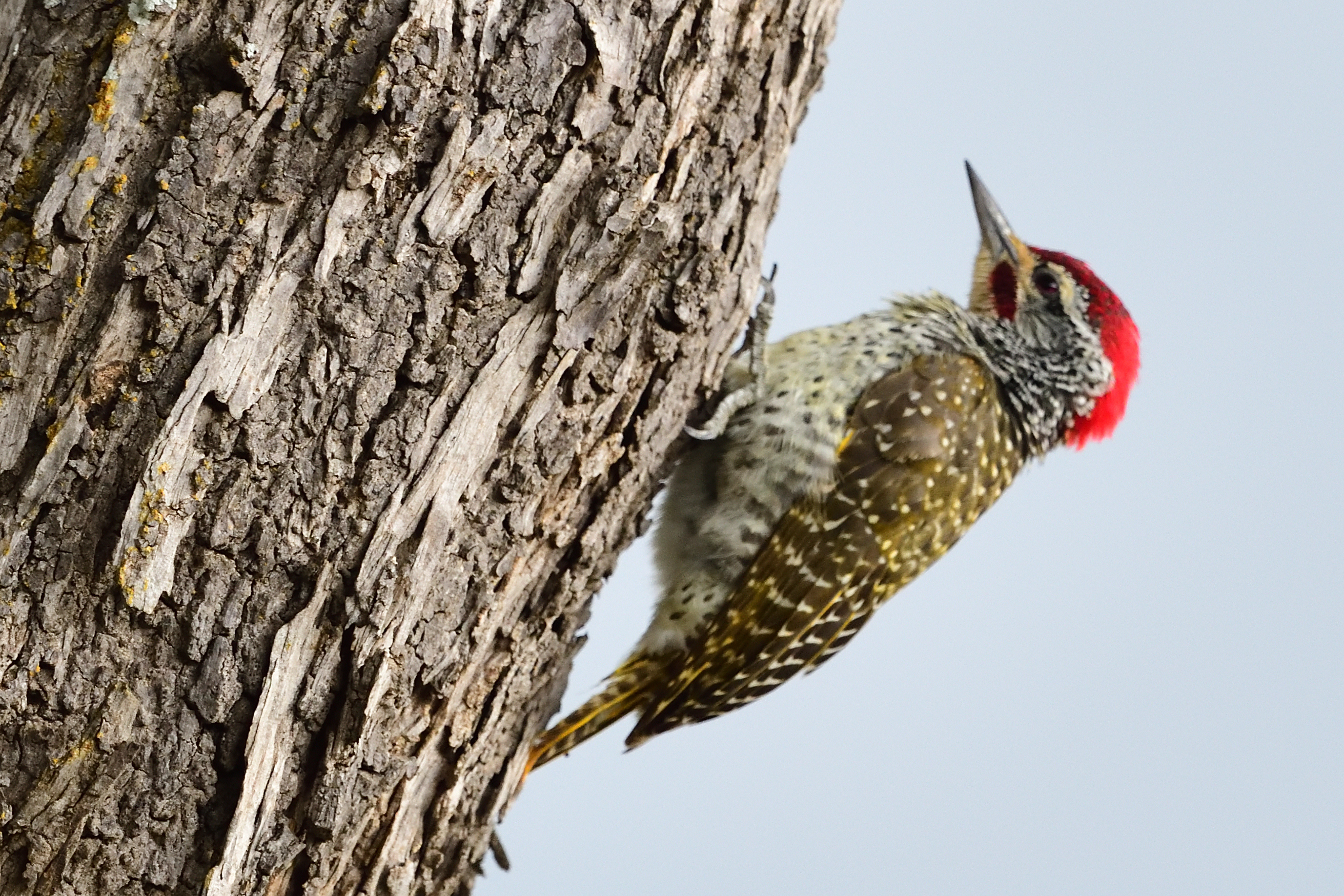
Nubian Woodpecker, Campethera nubica – Endemic to NE Africa
Day 14, Thursday, November 28 – Kiligolf – To airport
This was the last day for my guests and they had a flight out of KIA quite late. We did a morning walk on the golf course to see if we could manage to add a few more species. We saw the regular birds, but in addition: Black Cuckoo, African Wood Owl (heard), African Green Pigeon, Squacco and Striated Heron. Violet-backed Starling and Amethyst Sunbird. This took our total list for the trip to 398. I believe Ketil got more than 60 lifers and Tormod close to 150. Both of them had been to East Africa before. As mentioned before, Ketil is quite a famous Norwegian wildlife photographer. To see some of his work, go to ketilknudsen.com. We had lunch and it was soon time to take them to the airport. This was the last trip report for 2019. The year proved to be a busy year for me and I ended up with 933 birds seen in East Africa for the year.